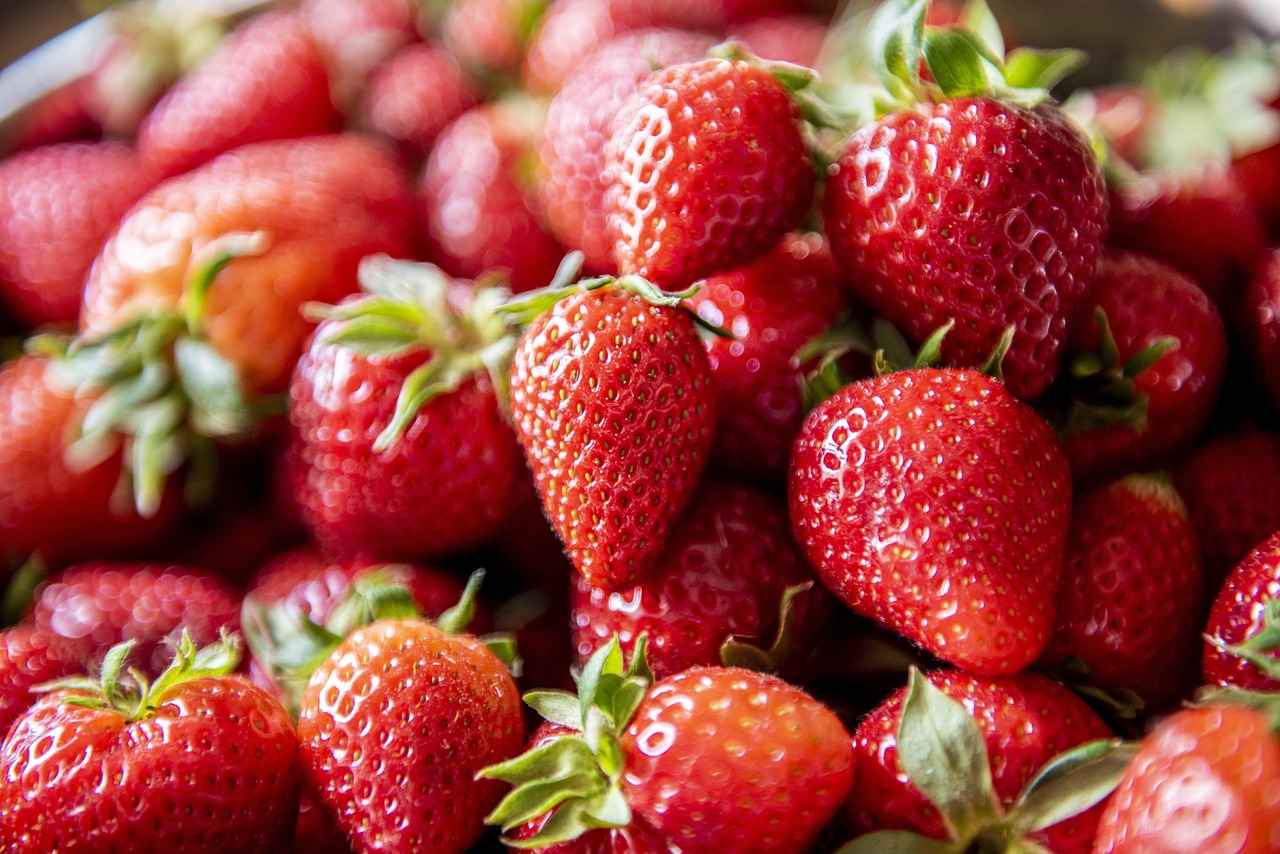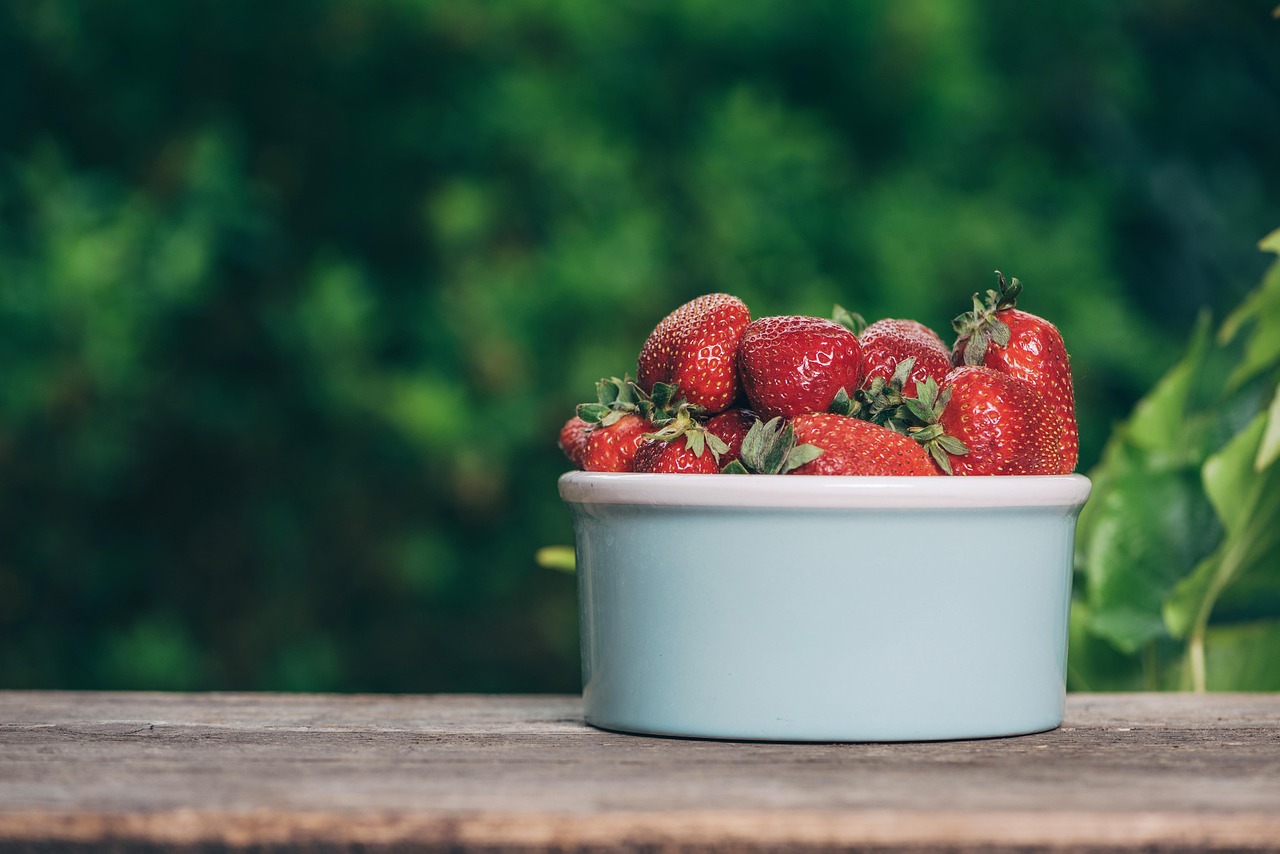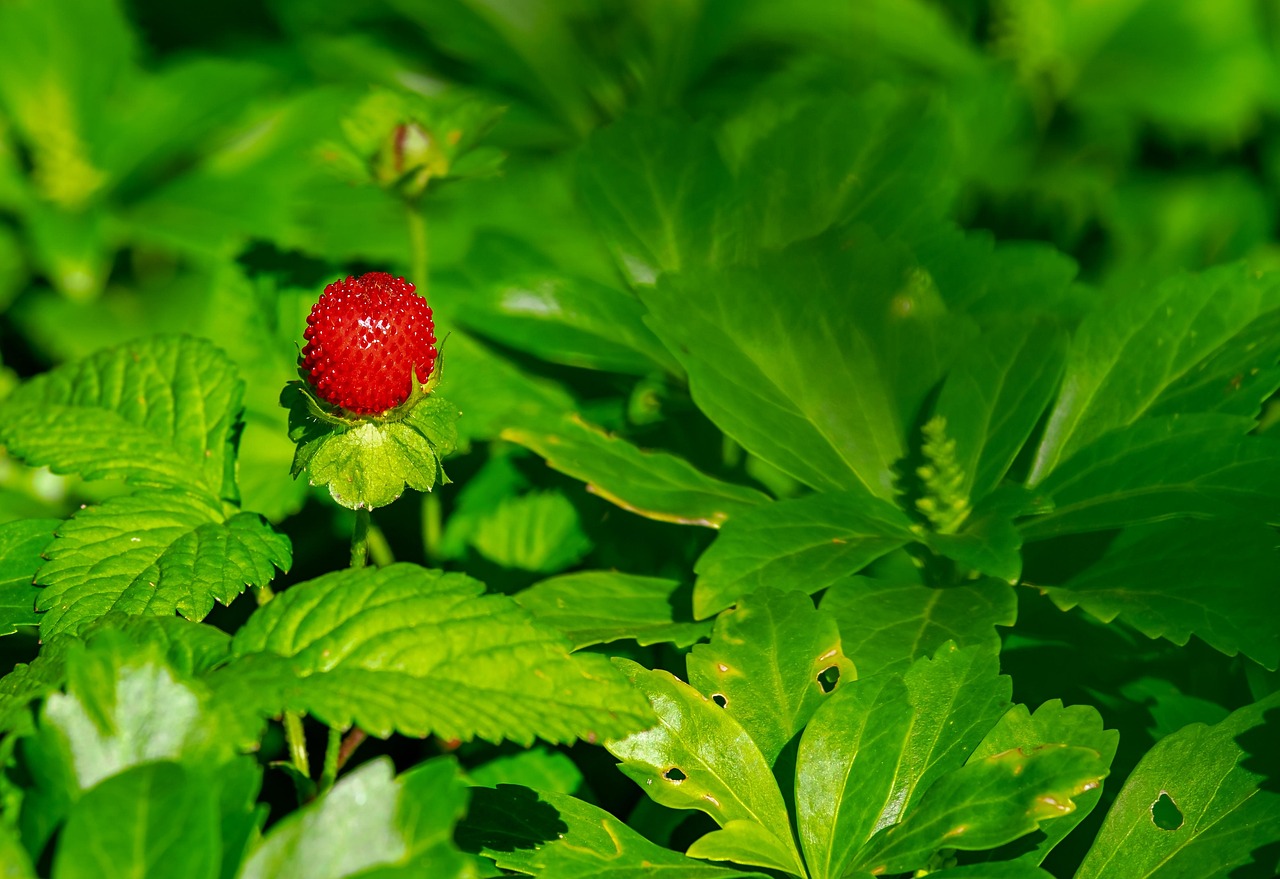Strawberry leaves may dry out due to several reasons, including insufficient water, nutrient deficiencies, pests, or diseases. To address this issue, ensure consistent watering, check for pests, and provide appropriate nutrients to promote healthy growth.
Strawberries are a popular fruit, cherished for their sweet flavor and vibrant color. However, like any plant, they can encounter challenges that affect their health. One common issue that gardeners face is the drying out of strawberry leaves. This symptom can be alarming and may indicate underlying problems that need attention. Understanding the causes will help in implementing effective solutions to restore the plants to their full glory.
Drying leaves can be a sign of various issues, ranging from environmental stress to biological threats. The health of strawberry plants is closely linked to their growing conditions. Factors such as soil quality, moisture levels, and exposure to pests can all play significant roles in the vitality of the plants. Recognizing these factors is essential for maintaining a thriving strawberry patch.
Common Causes of Drying Strawberry Leaves

There are several reasons why strawberry leaves may begin to dry out. Each cause has its own set of symptoms and solutions. Below are some of the most common issues that affect strawberry plants:
- Water Stress: Insufficient or excessive watering can lead to dry leaves. Strawberries prefer consistently moist soil without becoming waterlogged.
- Nutrient Deficiencies: Lack of essential nutrients, particularly nitrogen, can cause leaves to yellow and dry out.
- Pest Infestation: Pests such as aphids or spider mites can damage leaves, leading to dryness and wilting.
- Disease: Fungal diseases like powdery mildew or root rot can affect leaf health and cause drying.
- Environmental Factors: Excessive sunlight or wind exposure can lead to drying out of the leaves.
Understanding these causes enables gardeners to take proactive measures. Regular monitoring of the plants can help detect early signs of distress. Furthermore, maintaining proper cultural practices will support the overall health of the strawberries.
Identifying Water Issues
Water stress is one of the most common culprits behind drying leaves in strawberry plants. It is crucial to strike a balance between under-watering and over-watering. Insufficient water leads to drought stress, which causes the leaves to curl and dry out. Conversely, over-watering can suffocate the roots and promote root rot, leading to similar symptoms.
To determine if water is the issue, consider the following:
- Check the soil moisture regularly using your fingers or a moisture meter.
- Avoid letting the soil dry out completely between waterings.
- Ensure proper drainage to prevent waterlogging.
Nutrient Deficiencies
Nutrient deficiencies can also manifest as drying leaves. A lack of nitrogen is particularly known for causing this issue. Healthy strawberry plants require a balanced supply of nutrients to thrive. A deficiency can lead to stunted growth and poor fruit development.
To address nutrient deficiencies:
- Conduct a soil test to determine nutrient levels.
- Apply a balanced fertilizer designed for fruiting plants.
- Avoid over-fertilizing, which can be harmful.
Taking these steps will help restore your strawberry plants’ health and prevent leaf drying in the future.
Pest Infestations and Their Impact
Pests can significantly affect the health of strawberry plants. These unwanted visitors not only damage the leaves but also weaken the overall plant structure. Identifying and managing pests is crucial for preventing leaf drying and ensuring robust growth.
Common Pests Affecting Strawberry Plants
Several pests can infest strawberry plants, leading to drying leaves. Here are some common ones to watch out for:
- Aphids: Small, soft-bodied insects that suck sap from leaves, causing curling and drying.
- Spider Mites: Microscopic pests that thrive in hot, dry conditions and can cause stippling and discoloration.
- Slugs and Snails: These creatures feed on leaves, creating irregular holes and promoting fungal diseases.
- Whiteflies: These insects can cause leaf yellowing and drying by feeding on the plant sap.
Regular inspection of your plants is essential for early detection of these pests. Look for signs such as webs, discolored leaves, or tiny insects on the undersides of the leaves.
Managing Pest Infestations
Once you identify a pest problem, prompt action is necessary. Here are some effective management strategies:
- Natural Predators: Introduce beneficial insects like ladybugs that feed on aphids and other harmful pests.
- Insecticidal Soap: Use insecticidal soap to suffocate soft-bodied insects. Be sure to follow application instructions carefully.
- Neem Oil: This natural pesticide can disrupt the life cycle of many pests without harming beneficial insects when used correctly.
- Cultural Practices: Maintain proper spacing between plants for good airflow and avoid over-fertilizing, which can attract pests.
Diseases Affecting Strawberry Leaves
Diseases can also lead to the drying and deterioration of strawberry leaves. Fungal infections are particularly common in strawberries, especially in humid conditions. Recognizing the symptoms of these diseases is vital for effective treatment.
Common Diseases
The following are some diseases that may cause strawberry leaves to dry out:
- Powdery Mildew: Characterized by white, powdery spots on leaves, this fungal disease thrives in warm, dry environments.
- Leaf Spot: This condition appears as small, dark spots on the leaves, eventually leading to yellowing and drying out.
- Root Rot: Caused by overwatering or poorly drained soil, it leads to wilting and drying of leaves due to unhealthy roots.
Preventing and Treating Diseases
Taking preventive measures can help keep diseases at bay. Here are some strategies for managing plant health:
- Good Air Circulation: Space plants adequately to ensure good airflow, reducing humidity around the foliage.
- Avoid Overhead Watering: Water at the base of the plant to minimize moisture on the leaves, which can promote fungal growth.
- Crop Rotation: Avoid planting strawberries in the same location year after year to prevent soil-borne diseases.
- Fungicides: In cases of severe infection, consider using fungicides recommended for strawberries.
By understanding pests and diseases that affect strawberry plants, gardeners can take proactive steps. Regular monitoring and timely action are key to maintaining healthy leaves and promoting successful strawberry production.

Environmental Factors Affecting Strawberry Leaves
Environmental conditions play a critical role in the health of strawberry plants. Factors such as temperature, humidity, sunlight, and wind can all contribute to the drying out of leaves. Understanding these elements helps gardeners create optimal growing conditions for their strawberries.
Temperature and Humidity
Strawberries thrive in moderate temperatures. Extreme heat or cold can stress the plants, leading to drying leaves. High temperatures, particularly above 90°F (32°C), can cause leaf scorching, while cold temperatures below 32°F (0°C) can damage the plant tissue.
Humidity is another important factor. Low humidity can lead to excessive transpiration, resulting in water loss and dry leaves. Conversely, high humidity may promote fungal diseases. To manage temperature and humidity effectively, consider the following:
- Provide Shade: During extreme heat, use shade cloth to protect plants from direct sun exposure.
- Mulching: Apply organic mulch around the base of the plants to retain soil moisture and regulate temperature.
- Watering Schedule: Water early in the morning to reduce evaporation and ensure plants have sufficient moisture throughout the day.
Sunlight Requirements
Strawberry plants require full sun for optimal growth, which means they need at least 6-8 hours of direct sunlight daily. Insufficient light can lead to weak plants with yellowing leaves and poor fruit production.
On the contrary, excessive sunlight can also be detrimental, especially during peak summer months. Here are some tips for managing sunlight exposure:
- Choose the Right Location: Plant strawberries in a location that receives ample sunlight but has some protection from the harsh afternoon sun.
- Row Orientation: If planting in rows, orient them north to south to maximize sunlight exposure throughout the day.
- Use Companion Plants: Consider planting taller crops nearby to provide some shade during the hottest part of the day.
Wind Exposure and Its Effects

Wind can have a significant impact on strawberry plants. Strong winds can lead to physical damage, drying out leaves, and increasing transpiration rates. Protecting your plants from wind exposure is crucial for maintaining their health.
Protective Measures Against Wind
To minimize wind damage, consider these protective measures:
- Windbreaks: Use natural barriers like trees or shrubs to shield strawberry plants from strong winds.
- Row Covers: Employ lightweight row covers during windy conditions to provide temporary protection while allowing light and moisture to reach the plants.
- Staking Plants: For taller strawberry varieties, staking can help support the plants against wind pressure.
Soil Quality and Composition
The quality of the soil in which strawberries are planted significantly influences their health. Poor soil composition can lead to nutrient deficiencies and water retention issues, contributing to drying leaves.
Improving Soil Quality
To enhance soil quality for strawberries, follow these guidelines:
- Soil Testing: Conduct a soil test to determine pH levels and nutrient content. Strawberries prefer slightly acidic soil with a pH between 5.5 and 6.5.
- Add Organic Matter: Incorporate compost or well-rotted manure into the soil to improve fertility and structure.
- Proper Drainage: Ensure that the planting area has good drainage to prevent waterlogging, which can lead to root rot.
By understanding and managing environmental factors, gardeners can create a healthier ecosystem for their strawberry plants. This proactive approach will help prevent drying leaves and promote lush growth throughout the season.
Additional Tips for Healthy Strawberry Plants

In addition to addressing the specific causes of drying leaves, there are general practices that can promote the overall health of strawberry plants. By incorporating these tips, gardeners can create an environment conducive to thriving plants and abundant fruit production.
Regular Maintenance Practices
Routine maintenance is key to preventing issues before they arise. Here are some best practices to consider:
- Pruning: Regularly remove dead or yellowing leaves to improve air circulation and reduce disease risk.
- Weeding: Keep the area around strawberry plants free of weeds, which can compete for nutrients and moisture.
- Monitoring: Conduct frequent inspections for signs of pests or diseases. Early detection is crucial for effective management.
Choosing the Right Varieties
Different strawberry varieties have varying levels of resistance to diseases and pests. Selecting the right variety based on your local climate and conditions can make a significant difference. Consider these factors when choosing strawberry plants:
- Climate Adaptability: Choose varieties specifically suited for your climate zone to ensure better growth and resilience.
- Resistance Traits: Look for varieties with natural resistance to common diseases and pests.
- Fruit Type: Decide between June-bearing, everbearing, or day-neutral varieties based on your harvesting preferences.
Final Thoughts
Understanding why strawberry leaves dry out is essential for maintaining healthy plants and ensuring a fruitful harvest. By addressing factors such as water stress, nutrient deficiencies, pest infestations, diseases, environmental conditions, and soil quality, gardeners can effectively combat this issue. Regular monitoring and routine maintenance further enhance plant health, ultimately leading to a successful growing season.
The journey of growing strawberries can be rewarding, but it requires attention and care. By implementing the strategies outlined in this article, you can create a thriving environment for your strawberries. Remember that patience and diligence are key. With the right practices in place, your strawberry plants will flourish, providing you with delicious fruit to enjoy.
In summary, prioritize understanding the specific needs of your strawberry plants. Make necessary adjustments based on observed symptoms and environmental conditions. By doing so, you will not only prevent leaf drying but also promote robust growth and bountiful harvests for seasons to come.
